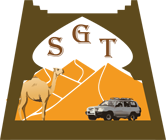Morocco Travel FAQ’S
With an extension of 446,550 km2 Morocco has approximately 36 million inhabitants. The country’s largest city is Casablanca, with just under 6.5 million inhabitants. The capital is Rabat which, like Casablanca, is also located on the Atlantic coast. Marrakech, in the interior, is without a doubt one of the most important cities. Located at the foot of the Atlas Mountains, it is one of Morocco’s four imperial cities; it has the largest traditional market in the country and one of the busiest squares in Africa and the world.
Will I need a VISA to enter Morocco?
If you are a citizen of the United States, Canada or the British Empire, the answer is “no.” All other clients should consult the Moroccan Embassy or Consulate in their country or you may refer to the following website http://www.moroccanconsulate.com/visa.cfm
What is Morocco’s currency called?
The Moroccan currency called the DIRHAM. Rates vary little between banks, but some banks charge a fee for currency exchanges which can add up to a considerable sum with the smaller denominations. Major credit cards are accepted in the larger hotels and all big shops. ATM cards can be used in many cities even in the south. Traveler’s cheques are not widely accepted in Morocco anymore and they can be difficult to cash or exchange and only for a very limited amount. Use a money belt for all your valuable papers, checks, passport and credit cards.
Would it be wise to bring some sort of “remedy” for stomach discomfort?
Yes. While the food in general and municipal water supplies in Morocco are perfectly safe, one never knows how your body’s “system” will react to new and unusual foods or different water supplies. Therefore, it is always wise to keep with you some sort of “stomach remedy” such as Pepto-Bismol, Imodium AD, etc. at all times.
What is the food like?
In a word, delicious. Salads are lovely; fresh, succulent vegetables served with the light vinaigrette on the side. Harira is the Moroccan word for a thick vegetable soup. A particularly delicious one contains a bread dumpling. Main courses are usually one of the following: grilled meat on skewers often served with French fries; couscous, vegetarian or meat with vegetables; and Tagine, the Moroccan stew, usually meat, tomatoes, potatoes, onions, and spices. Moroccan cooks use a mélange of spices such as cumin, turmeric, paprika, saffron and pepper for a subtly flavored cuisine. In the Sahara, you can find ‘Berber pizza’. This is a double crusted pie filled with meat, hard boiled eggs, almonds, and spices. Sometimes rather peppery, Berber pizza is best eaten with glass after glass of hot, sweet, mint tea.
What about women traveling alone?
The Hollywood fantasy of the guttural whisper of “Come with me to the Kasbah” is just that, a fantasy. Just as in the west, a person’s demeanor conveys a message. Purposeful, confident behavior does tend to discourage unwanted comments. Some young women who were traveling alone, riding the bus and having a budget of only a few dollars per day for accommodations, said that the harassment consisted of wanting to chat her up, giving her compliments such as telling her how many camels she is worth or remarking on her beauty. It wasn’t so much what was said, but the fact that the western women couldn’t have a moment’s peace. When one fellow stopped, another soon took his place. According to these women, the way to avoid unwelcome intrusions on buses etc. is to sit with some older local women.
What should I wear?
Covered is better. Moroccans appreciate the respect shown for their culture. The Moroccans are covered and they look quite attractive. Loose, draped clothing enhances the human figure which too often needs all the enhancing it can get. Just compare a family of plumpish, pink, skimpily dressed tourists as they trundle about in the hot sun getting pinker and pinker to a Moroccan family dressed in flowing garments. Men should avoid going bare-chested and neither sex should wear very short shorts. Walking shorts are fine for both sexes (knee length). Rather than sleeveless blouses or dresses, women should wear short sleeves. Skirts or jeans are equally accepted. Good walking shoes are necessary. Take only the jewelry you can’t do without.
